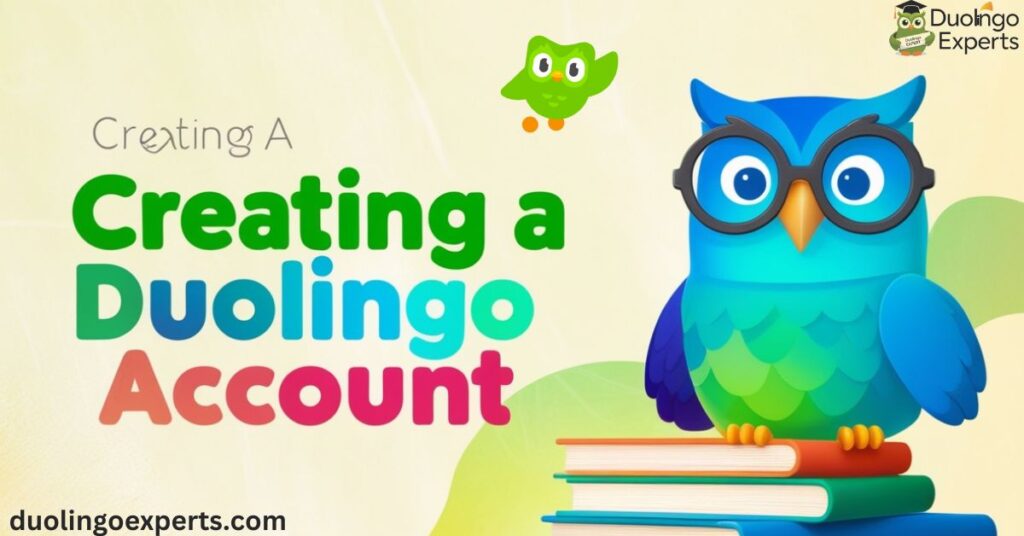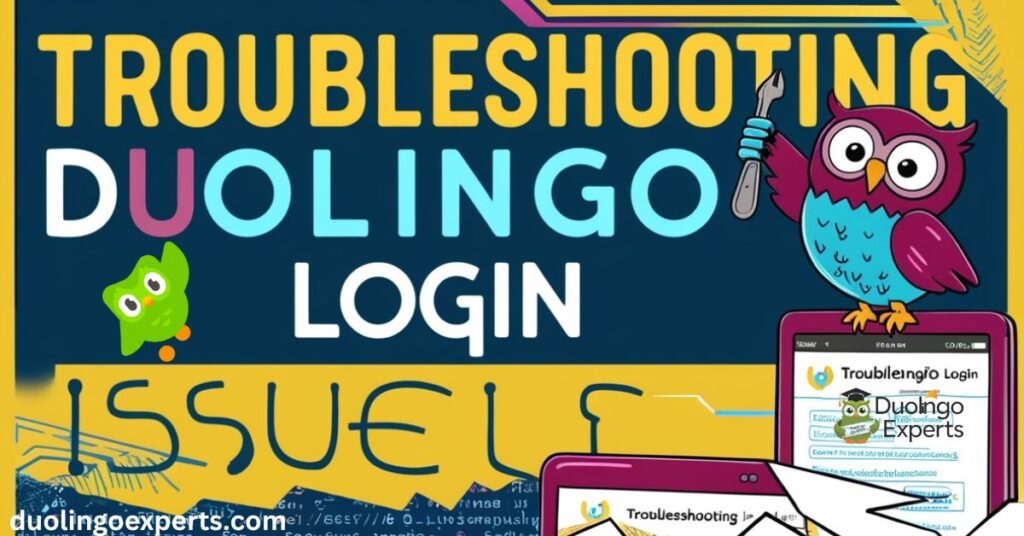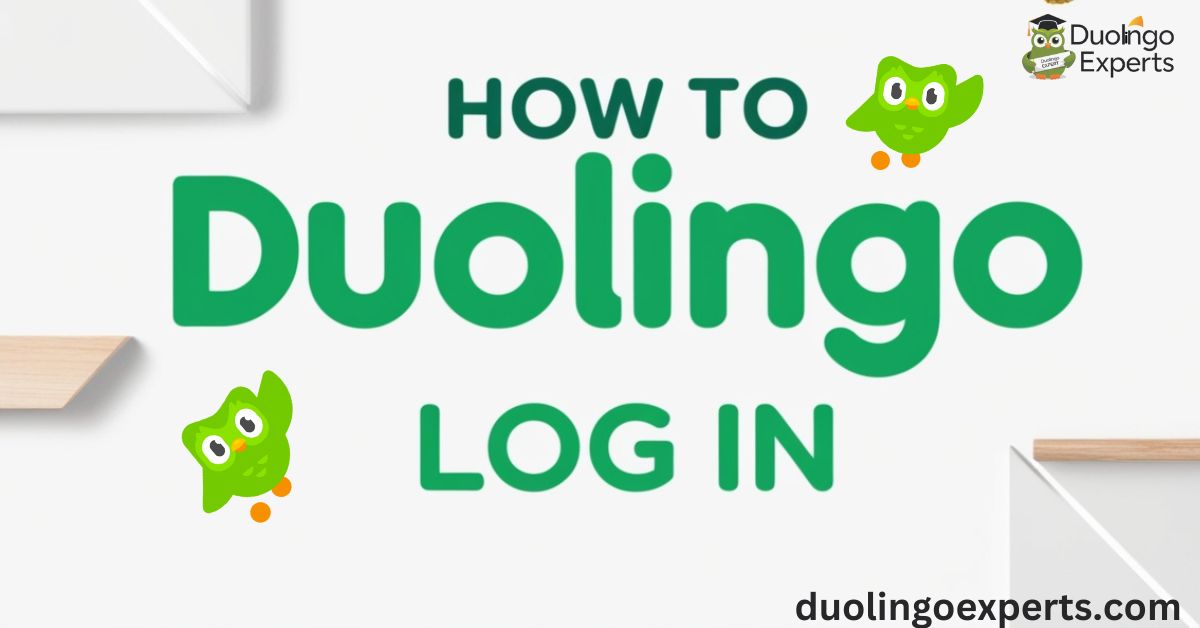Duolingo has transformed the way millions of people around the world learn languages. Whether you’re picking up a new language for fun or trying to master a second language for professional reasons, Duolingo log in offers an accessible, gamified approach to language learning.
But to make the most of this powerful tool, you need to fully understand how to manage your Duolingo login and Duolingo account settings. In this comprehensive guide, we’ll walk you through everything from creating your Duolingo account signup to troubleshooting login issues, ensuring a smooth and secure learning experience.
Creating a Duolingo Account

Before diving into language lessons, the first step is to create a Duolingo account. This account is where all your progress, achievements, and settings are stored, allowing you to track your learning journey.
Steps to Create a Duolingo Account
- Visit the Duolingo Website or Open the App
Go towww.duolingo.com login sign in or open the mobile app on your device (iOS or Android). Both versions offer the same basic features, but logging in via the website allows for easier management of account settings and progress tracking. - Choose Your Sign-Up Method
You can create a Duolingo account using your Google, Facebook, or Apple account for faster sign-ups. Alternatively, you can use your email for a traditional sign-up. Here’s a breakdown of each option:- Google or Facebook login: Simple one-click sign-up, especially convenient if you’re already logged into these accounts.
- Apple ID: Available for iOS users, allowing a streamlined login experience.
- Email signup: This requires you to enter your email address and create a strong password for your Duolingo login.
- Verify Your Email
After choosing your preferred sign-up method, Duolingo will send an email verification link. This step ensures that you’ve provided a valid email address and allows you to recover your account if you ever forget your password. - Set Up Your Profile
You’ll be asked to set up your learning goals (e.g., how much time you want to dedicate daily). Duolingo’s personalized learning experience adapts to these preferences. Here, you can also choose your starting language, be it Spanish, French, or any of the 30+ languages Duolingo offers.
Logging in to Your Duolingo Account
Once your account is set up, logging in is a straightforward process. Understanding the Duolingo login process will ensure you don’t miss out on valuable lessons or progress.
Duolingo Login Process on the Website
- Go to the Duolingo Website
Navigate to www.duolingo.com and click on the Login button at the top-right corner. - Enter Your Credentials
Log in using your email address and password, or use the social media login method you originally used (Google, Facebook, Apple). If you forget your password, don’t worry – Duolingo makes it easy to reset. - Stay Logged In Option
Duolingo allows you to check a box to stay logged in, which will save you time the next time you visit the site.
Duolingo Login Process on the Mobile App
- Open the Duolingo App
On your mobile device, open the Duolingo app (available on both Android and iOS). - Use Social Media Login or Email
You can log in via your Google, Facebook, Apple, or email. The process is similar to the website version, making it easy to switch between devices. - Biometric Login (Optional)
Duolingo also offers Face ID and Fingerprint login for supported devices. This feature is a great way to ensure quick, secure access to your account without entering your password every time.
Troubleshooting Duolingo Login Issues

No one likes dealing with technical issues, especially when you’re in the middle of a language lesson. Here’s how to resolve common Duolingo login issues:
Forgotten Password
If you can’t remember your Duolingo login credentials, simply click on the Forgot Password link on the login page. Duolingo will email you a link to reset your password. Be sure to check your spam folder if you don’t see the email right away.
Account Hacked or Compromised
If you suspect someone has accessed your account without permission, immediately reset your password using the steps above. Duolingo login also offers two-factor authentication (2FA) for added security. Enabling 2FA ensures that even if someone gets hold of your password, they can’t access your account without a second verification step.
General Login Issues
If you’re unable to log in, check for the following:
- Check your internet connection to ensure it’s stable.
- Clear your browser cache or update the Duolingo app to the latest version.
- Disable any browser extensions that might interfere with the login process.
Managing Your Duolingo Account Settings
Once you’re logged in, you’ll want to manage your Duolingo account settings to tailor the platform to your needs. Here are some important settings to explore:
Profile Settings
- Change Your Name: Personalize your profile by changing your display name.
- Set a Profile Picture: Upload a picture to make your profile unique.
- Select Your Learning Language: You can switch between languages in the settings if you decide to learn something new.
- Link Social Media Accounts: For easy access, link your Facebook or Google account to Duolingo.
Learning Settings
Duolingo lets you customize how you learn:
- Daily Goals: Set daily learning goals, whether it’s completing a set number of lessons or practicing for a certain amount of time.
- Notifications: Enable reminders to stay on track with your language learning.
- Learning Path Customization: You can adjust which language skills to focus on, skipping topics you’ve already mastered.
Subscription Options
Duolingo offers two types of accounts: Free and Duolingo Plus. Here’s what you get with each:
- Free Account: Access to all basic features like lessons, practice, and progress tracking.
- Duolingo Plus: A paid subscription that removes ads, offers offline lessons, and gives you unlimited hearts (so you can keep learning without interruption). Plus, it supports the development of new features.
Parental Controls (for Child Accounts)
Duolingo also allows parental controls for child accounts (users under 13). Parents can:
- Set up and manage a child’s account with restrictions on inappropriate content.
- Monitor their child’s progress tracking and activity within the app.
Duolingo Login Features and Benefits

Duolingo’s login features provide a rich and engaging language learning experience, making it one of the most popular language learning platforms today.
Personalized Learning Experience
When you log in to Duolingo, the platform adapts to your progress, learning goals, and preferences. You’ll receive lessons that are tailored specifically to your current skill level, providing a gamified language learning experience that keeps you motivated.
Progress Tracking and Achievements
Duolingo’s progress tracking tools let you monitor your development over time. You’ll see:
- Daily streaks: A record of how many days in a row you’ve completed lessons.
- Skill levels: Track how far you’ve advanced in each language skill.
- Achievements: Unlock fun badges and rewards as you progress through lessons.
Social Features and Leaderboards
One of the most exciting aspects of Duolingo is the social features it offers:
- Leaderboard competition: Compete with friends or other learners to climb to the top of the leaderboard.
- Language clubs: Join clubs to meet other language learners, share tips, and challenge each other.
Offline Lessons
For Duolingo Plus users, you can download lessons and learn offline, making it easy to practice wherever you go.
Duolingo Security and Privacy
When it comes to online learning platforms, security and privacy are critical. Duolingo takes both seriously.
Privacy Policy and Data Protection
Duolingo is committed to protecting your personal information. The platform adheres to the EU-U.S. Data Privacy Framework and the UK Extension to EU-U.S. Data Privacy Framework, ensuring your data is handled responsibly.
Two-Factor Authentication (2FA)
Two-factor authentication (2FA) is available for Duolingo users, adding an extra layer of security to your Duolingo login. When activated, you’ll receive a code on your phone or email, which you’ll need to enter along with your password to access your account.
Account Recovery
In case you forget your password or need to recover your account, Duolingo create account provides simple steps for account recovery, ensuring your learning progress is never lost.
Frequently Asked Questions About Duolingo Login
Can I Have Multiple Duolingo Accounts?
Yes, Duolingo allows users to create and manage multiple accounts. However, it’s important to keep track of which login credentials correspond to each account.
How Do I Change My Duolingo Password?
To change your Duolingo password, go to the Duolingo website or app and click on “Settings.” Under the “Account” section, select “Change Password.” Follow the prompts to enter your current password and set a new one.
How Do I Delete My Duolingo Account?
If you no longer wish to use Duolingo, you can delete your account. This will remove all your progress, so be sure to back up any data you want to keep.
Can I Access Duolingo Without an Account?
Yes, Duolingo allows you to access some basic lessons without an account, but signing up unlocks personalized learning, progress tracking, and other essential features.
How Can I Recover My Duolingo Account?
If you’ve forgotten your password, click the “Forgot Password” option on the login screen. Duolingo will send a password reset link to your registered email. Follow the instructions to reset your password and regain access to your account.
Can I Change the Language I’m Learning in Duolingo After Signing Up?
Yes, Duolingo allows you to switch your learning language anytime. Simply go to your account settings and select a new language under the “Learning Language” section. This flexibility ensures you can easily adapt your learning path.
Can I Log In to Duolingo on Multiple Devices?
Duolingo syncs your progress across multiple devices, so you can log in using the same account on your phone, tablet, or computer. This feature allows you to seamlessly continue learning from any device, whether at home or on the go.
How Can I Link My Duolingo Account to My Google or Facebook Account?
To link your Google or Facebook account, head to the account settings and navigate to the “Linked Accounts” section. From there, you can easily connect your social media profiles for quicker, one-click login in the future.
Does Duolingo Offer Support for Other Languages Not Listed in the App?
While Duolingo offers over 30 languages, the platform is constantly expanding. You can suggest a language through Duolingo’s support channels, and they may consider adding it in future updates.
Conclusion
By now, you should have a solid understanding of how to create a Duolingo account, log in, and manage your Duolingo account settings. Whether you’re just starting your language-learning journey or already deep into mastering a new language, Duolingo offers a rich and personalized learning experience that’s both fun and effective. Don’t forget to explore features like progress tracking, leaderboards, and offline lessons, all designed to make your language learning as efficient and engaging as possible.
Remember to keep your account secure by enabling two-factor authentication (2FA) and regularly updating your password. With Duolingo’s emphasis on data protection and its user-friendly interface, you can focus on what matters most – learning a new language! Happy learning!
>>>Read Also: Comprehensive Guide to Leagues in Duolingo

DuolingoExperts, managed by MarkJohan, offers expert insights and tips for mastering languages. A tech-driven platform to enhance your learning experience.

